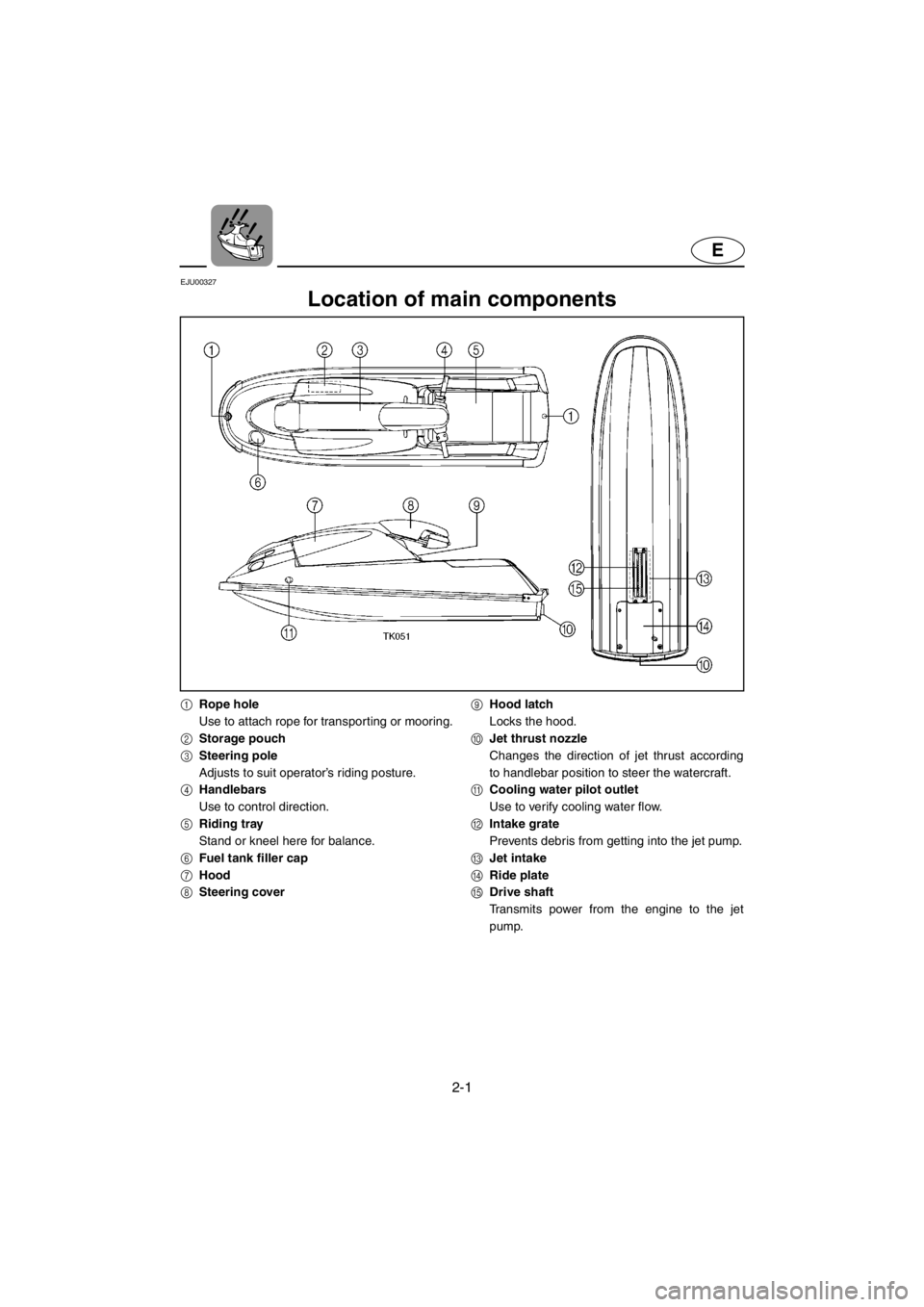Page 17 of 107
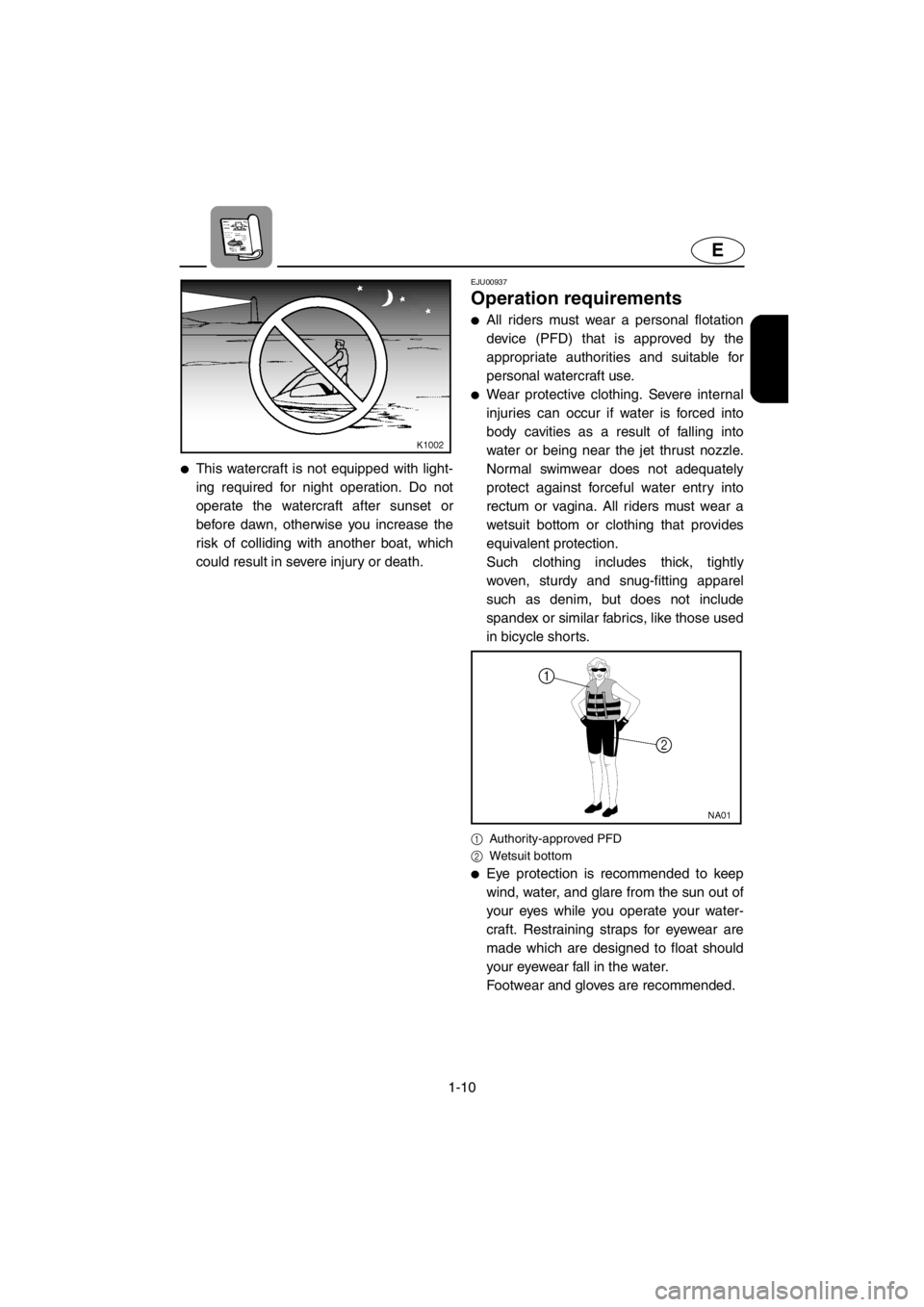
1-10
E
●This watercraft is not equipped with light-
ing required for night operation. Do not
operate the watercraft after sunset or
before dawn, otherwise you increase the
risk of colliding with another boat, which
could result in severe injury or death.
EJU00937
Operation requirements
●All riders must wear a personal flotation
device (PFD) that is approved by the
appropriate authorities and suitable for
personal watercraft use.
●Wear protective clothing. Severe internal
injuries can occur if water is forced into
body cavities as a result of falling into
water or being near the jet thrust nozzle.
Normal swimwear does not adequately
protect against forceful water entry into
rectum or vagina. All riders must wear a
wetsuit bottom or clothing that provides
equivalent protection.
Such clothing includes thick, tightly
woven, sturdy and snug-fitting apparel
such as denim, but does not include
spandex or similar fabrics, like those used
in bicycle shorts.
1
Authority-approved PFD
2
Wetsuit bottom
●Eye protection is recommended to keep
wind, water, and glare from the sun out of
your eyes while you operate your water-
craft. Restraining straps for eyewear are
made which are designed to float should
your eyewear fall in the water.
Footwear and gloves are recommended.
E_GM6-1.fm Page 10 Tuesday, July 11, 2000 10:49 AM
Page 18 of 107
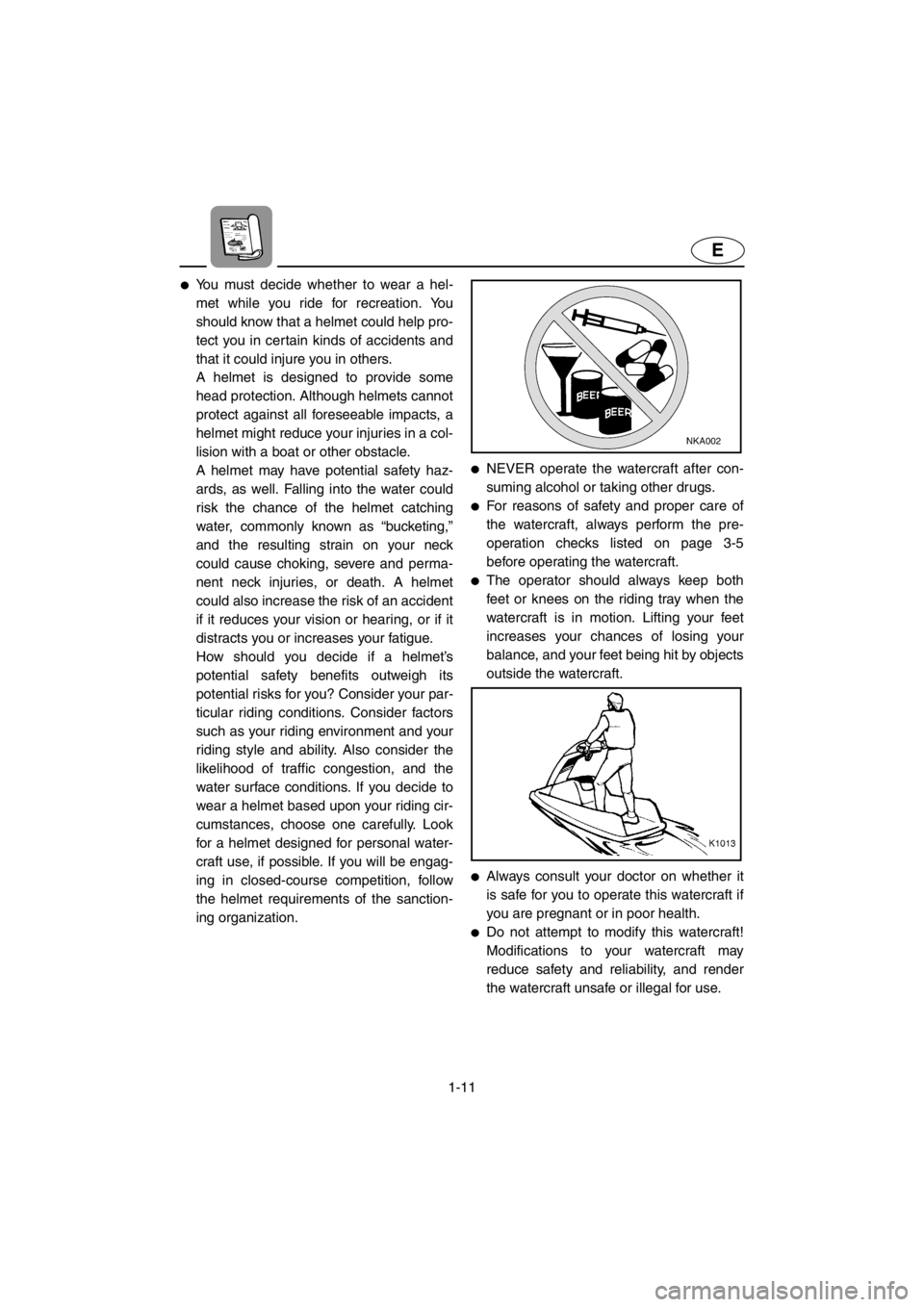
1-11
E
●You must decide whether to wear a hel-
met while you ride for recreation. You
should know that a helmet could help pro-
tect you in certain kinds of accidents and
that it could injure you in others.
A helmet is designed to provide some
head protection. Although helmets cannot
protect against all foreseeable impacts, a
helmet might reduce your injuries in a col-
lision with a boat or other obstacle.
A helmet may have potential safety haz-
ards, as well. Falling into the water could
risk the chance of the helmet catching
water, commonly known as “bucketing,”
and the resulting strain on your neck
could cause choking, severe and perma-
nent neck injuries, or death. A helmet
could also increase the risk of an accident
if it reduces your vision or hearing, or if it
distracts you or increases your fatigue.
How should you decide if a helmet’s
potential safety benefits outweigh its
potential risks for you? Consider your par-
ticular riding conditions. Consider factors
such as your riding environment and your
riding style and ability. Also consider the
likelihood of traffic congestion, and the
water surface conditions. If you decide to
wear a helmet based upon your riding cir-
cumstances, choose one carefully. Look
for a helmet designed for personal water-
craft use, if possible. If you will be engag-
ing in closed-course competition, follow
the helmet requirements of the sanction-
ing organization.
●NEVER operate the watercraft after con-
suming alcohol or taking other drugs.
●For reasons of safety and proper care of
the watercraft, always perform the pre-
operation checks listed on page 3-5
before operating the watercraft.
●The operator should always keep both
feet or knees on the riding tray when the
watercraft is in motion. Lifting your feet
increases your chances of losing your
balance, and your feet being hit by objects
outside the watercraft.
●Always consult your doctor on whether it
is safe for you to operate this watercraft if
you are pregnant or in poor health.
●Do not attempt to modify this watercraft!
Modifications to your watercraft may
reduce safety and reliability, and render
the watercraft unsafe or illegal for use.
E_GM6-1.fm Page 11 Tuesday, July 11, 2000 10:49 AM
Page 19 of 107
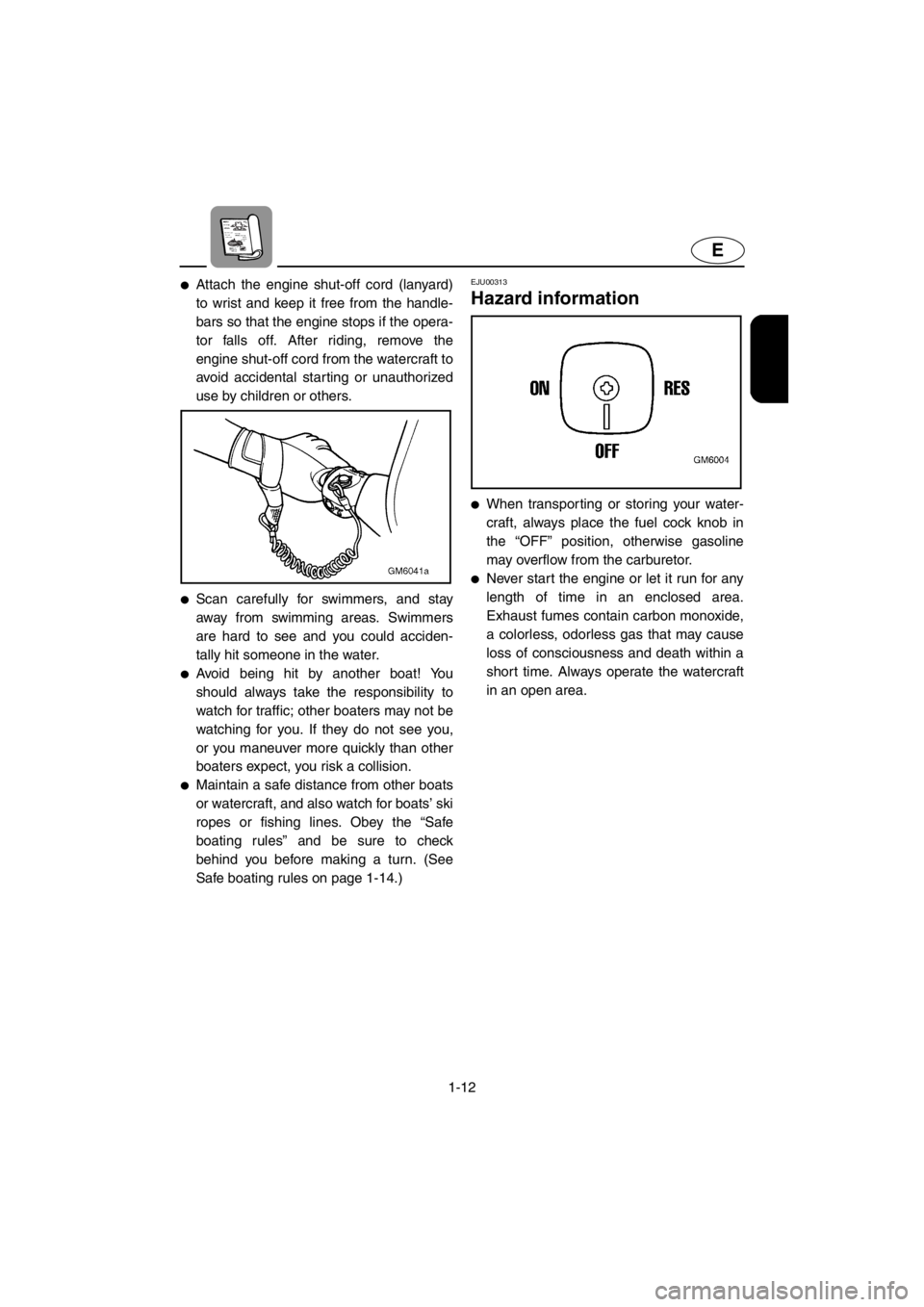
1-12
E
●Attach the engine shut-off cord (lanyard)
to wrist and keep it free from the handle-
bars so that the engine stops if the opera-
tor falls off. After riding, remove the
engine shut-off cord from the watercraft to
avoid accidental starting or unauthorized
use by children or others.
●Scan carefully for swimmers, and stay
away from swimming areas. Swimmers
are hard to see and you could acciden-
tally hit someone in the water.
●Avoid being hit by another boat! You
should always take the responsibility to
watch for traffic; other boaters may not be
watching for you. If they do not see you,
or you maneuver more quickly than other
boaters expect, you risk a collision.
●Maintain a safe distance from other boats
or watercraft, and also watch for boats’ ski
ropes or fishing lines. Obey the “Safe
boating rules” and be sure to check
behind you before making a turn. (See
Safe boating rules on page 1-14.)
EJU00313
Hazard information
●When transporting or storing your water-
craft, always place the fuel cock knob in
the “OFF” position, otherwise gasoline
may overflow from the carburetor.
●Never start the engine or let it run for any
length of time in an enclosed area.
Exhaust fumes contain carbon monoxide,
a colorless, odorless gas that may cause
loss of consciousness and death within a
short time. Always operate the watercraft
in an open area.
E_GM6-1.fm Page 12 Tuesday, July 11, 2000 10:49 AM
Page 20 of 107
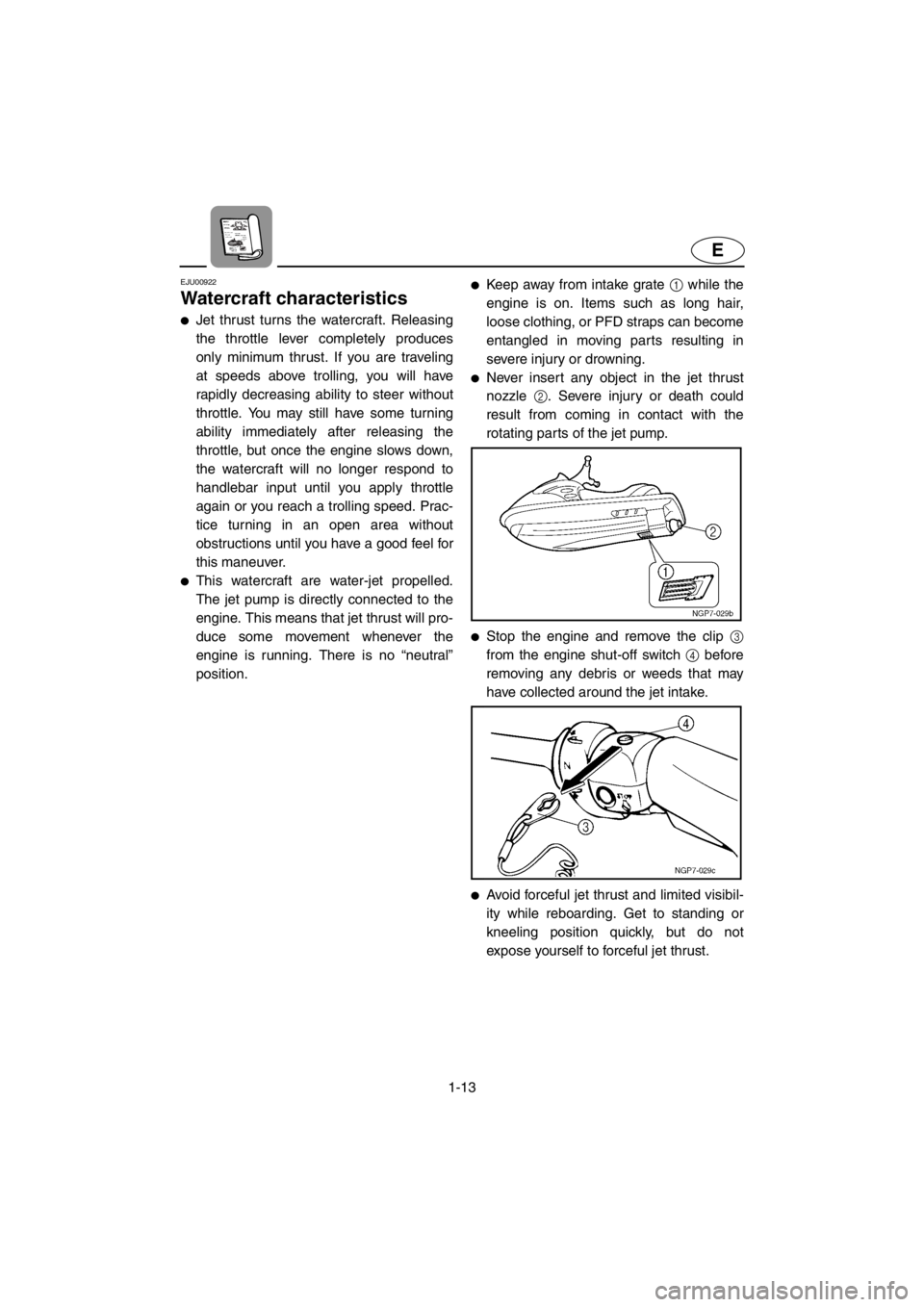
1-13
E
EJU00922
Watercraft characteristics
●Jet thrust turns the watercraft. Releasing
the throttle lever completely produces
only minimum thrust. If you are traveling
at speeds above trolling, you will have
rapidly decreasing ability to steer without
throttle. You may still have some turning
ability immediately after releasing the
throttle, but once the engine slows down,
the watercraft will no longer respond to
handlebar input until you apply throttle
again or you reach a trolling speed. Prac-
tice turning in an open area without
obstructions until you have a good feel for
this maneuver.
●This watercraft are water-jet propelled.
The jet pump is directly connected to the
engine. This means that jet thrust will pro-
duce some movement whenever the
engine is running. There is no “neutral”
position.
●Keep away from intake grate 1 while the
engine is on. Items such as long hair,
loose clothing, or PFD straps can become
entangled in moving parts resulting in
severe injury or drowning.
●Never insert any object in the jet thrust
nozzle 2. Severe injury or death could
result from coming in contact with the
rotating parts of the jet pump.
●Stop the engine and remove the clip 3
from the engine shut-off switch 4 before
removing any debris or weeds that may
have collected around the jet intake.
●Avoid forceful jet thrust and limited visibil-
ity while reboarding. Get to standing or
kneeling position quickly, but do not
expose yourself to forceful jet thrust.
E_GM6-1.fm Page 13 Tuesday, July 11, 2000 10:49 AM
Page 21 of 107

1-14
E
EJU00319
Safe boating rules
Your Yamaha watercraft is legally consid-
ered a powerboat. Operation of the water-
craft must be in accordance with the rules
and regulations governing the waterway on
which it is used.
EJU00322
Enjoy your watercraft
responsibly
You share the areas you enjoy when
riding your watercraft with others and with
nature. So your enjoyment includes a
responsibility to treat these other people,
and the lands, waters, and wildlife with
respect and courtesy.
Whenever and wherever you ride, think of
yourself as the guest of those around you.
Remember, for example, that the sound of
your watercraft may be music to you, but it
could be just noise to others. And the excit-
ing splash of your wake can make waves
others won’t enjoy. Avoid riding close to
shoreline homes and waterfowl nesting
areas or other wildlife areas, and keep a
respectful distance from fishermen, other
boats, swimmers, and populated beaches.
When travel in areas like these is unavoid-
able, ride slowly and obey all laws.
Remember that pollution can be harmful
to the environment. Do not refuel or add oil
where a spill could cause damage to nature.
Remove your watercraft from the water and
move it away from the shoreline before refu-
eling. And keep your surroundings pleasant
for the people and wildlife that share the
waterways: don’t litter!
When you ride responsibly, with respect
and courtesy for others, you help ensure
that our waterways stay open for the enjoy-
ment of a variety of recreational opportuni-
ties.
E_GM6-1.fm Page 14 Tuesday, July 11, 2000 10:49 AM
Page 22 of 107
E
–MEMO–
E_GM6-1.fm Page 15 Tuesday, July 11, 2000 10:49 AM
Page 23 of 107
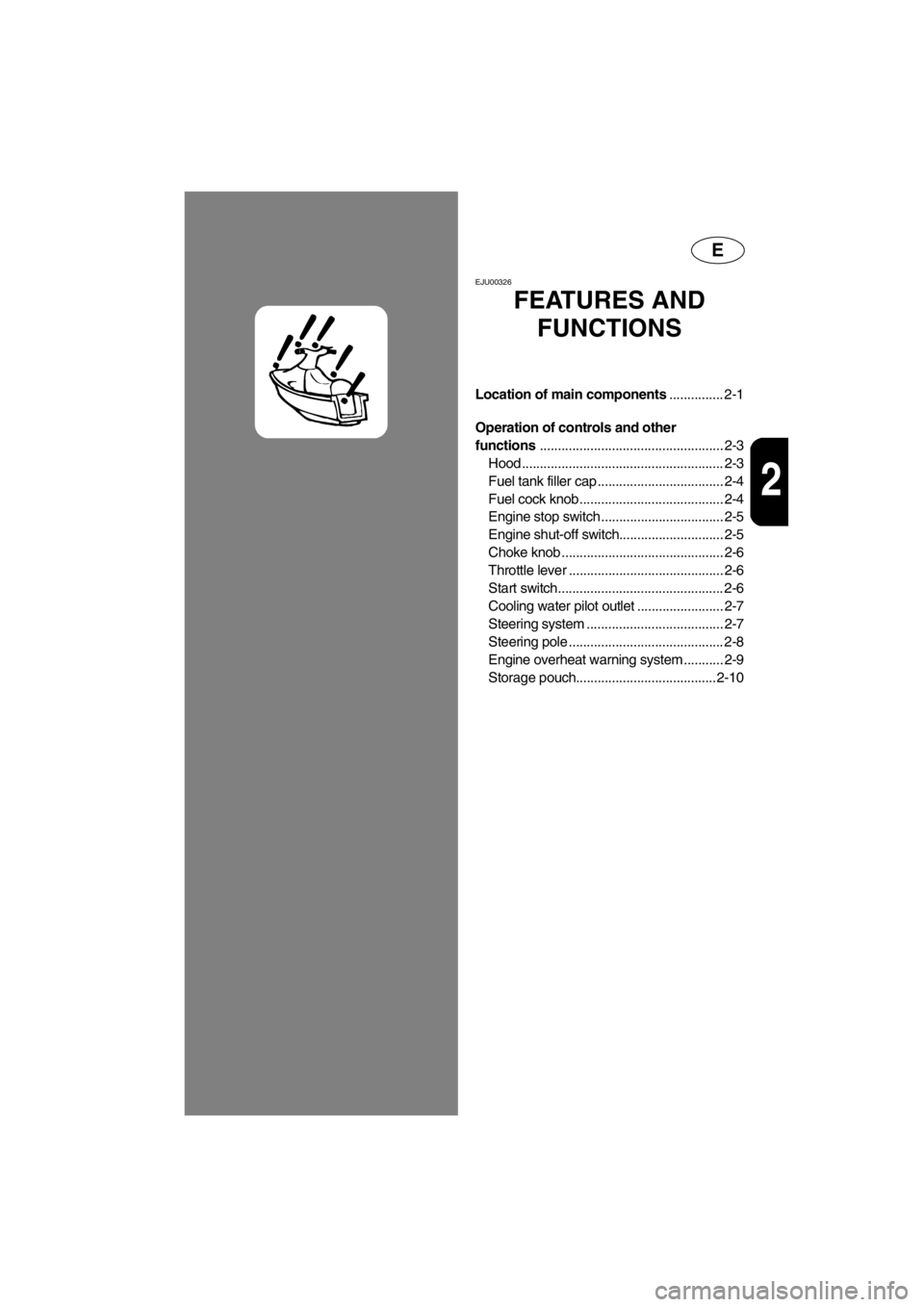
E
2
EJU00326
FEATURES AND
FUNCTIONS
Location of main components............... 2-1
Operation of controls and other
functions ................................................... 2-3
Hood ........................................................ 2-3
Fuel tank filler cap ................................... 2-4
Fuel cock knob........................................ 2-4
Engine stop switch .................................. 2-5
Engine shut-off switch............................. 2-5
Choke knob ............................................. 2-6
Throttle lever ........................................... 2-6
Start switch.............................................. 2-6
Cooling water pilot outlet ........................ 2-7
Steering system ...................................... 2-7
Steering pole ........................................... 2-8
Engine overheat warning system ........... 2-9
Storage pouch....................................... 2-10
E_GM6-2TOC.fm Page 1 Tuesday, July 11, 2000 10:50 AM
Page 24 of 107
2-1
E
EJU00327
Location of main components
1Rope hole
Use to attach rope for transporting or mooring.
2Storage pouch
3Steering pole
Adjusts to suit operator’s riding posture.
4Handlebars
Use to control direction.
5Riding tray
Stand or kneel here for balance.
6Fuel tank filler cap
7Hood
8Steering cover9Hood latch
Locks the hood.
0Jet thrust nozzle
Changes the direction of jet thrust according
to handlebar position to steer the watercraft.
ACooling water pilot outlet
Use to verify cooling water flow.
BIntake grate
Prevents debris from getting into the jet pump.
CJet intake
DRide plate
EDrive shaft
Transmits power from the engine to the jet
pump.
E_GM6-2.fm Page 1 Tuesday, July 11, 2000 10:51 AM
 1
1 2
2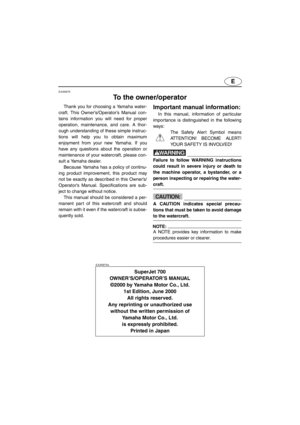 3
3 4
4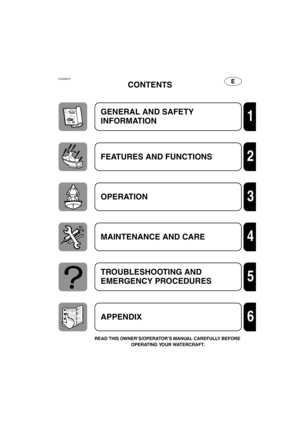 5
5 6
6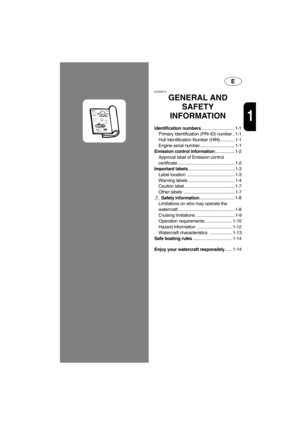 7
7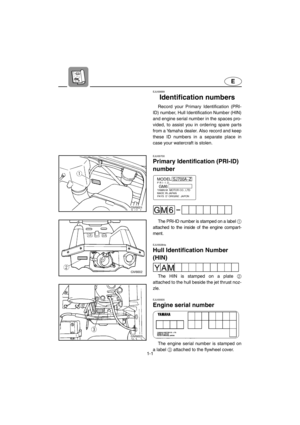 8
8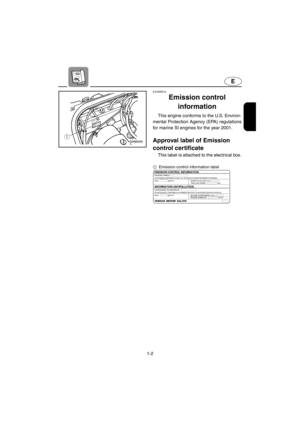 9
9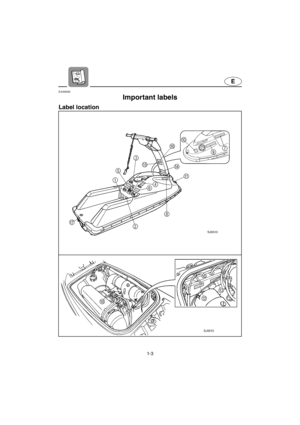 10
10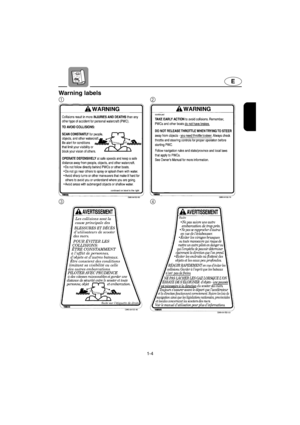 11
11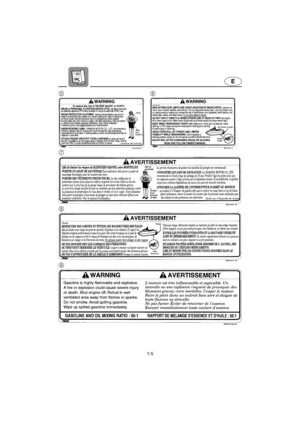 12
12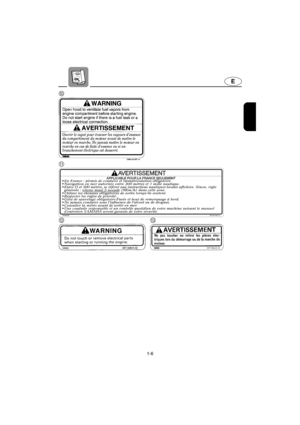 13
13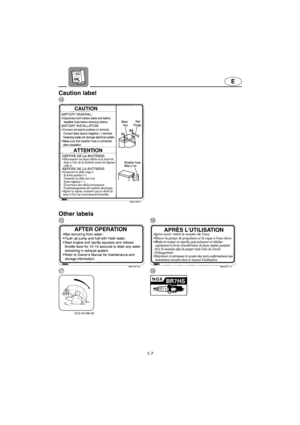 14
14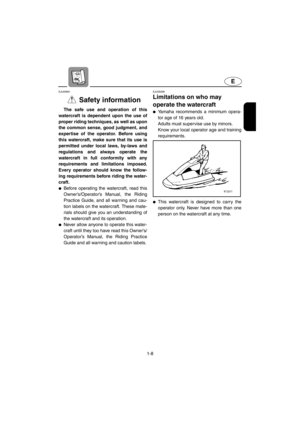 15
15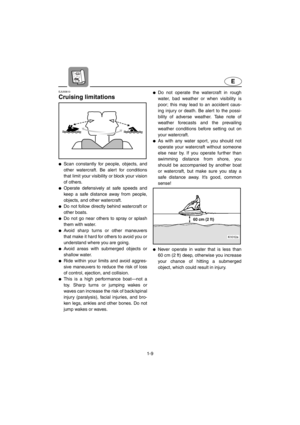 16
16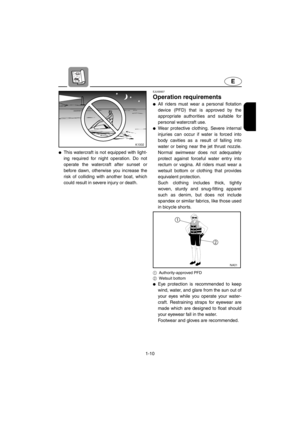 17
17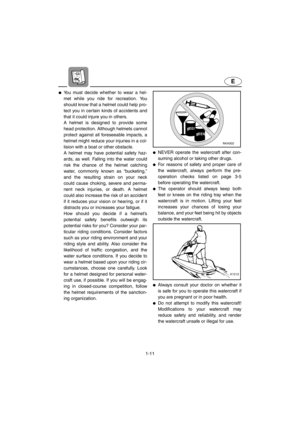 18
18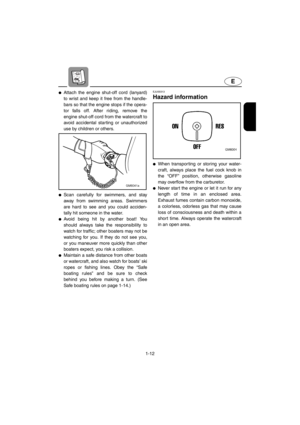 19
19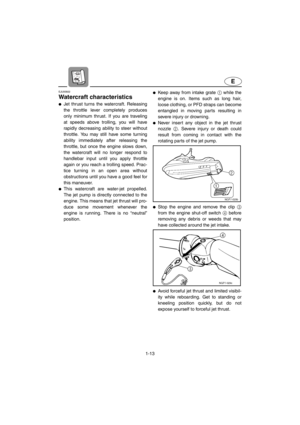 20
20 21
21 22
22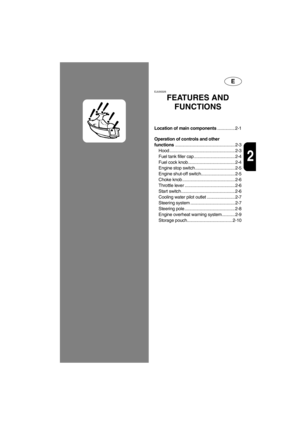 23
23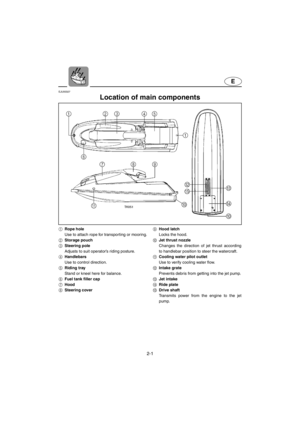 24
24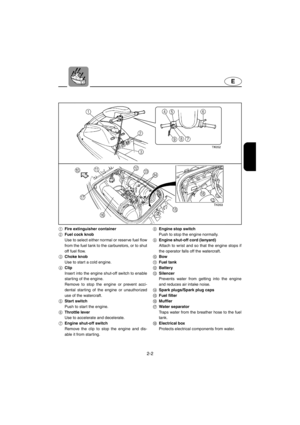 25
25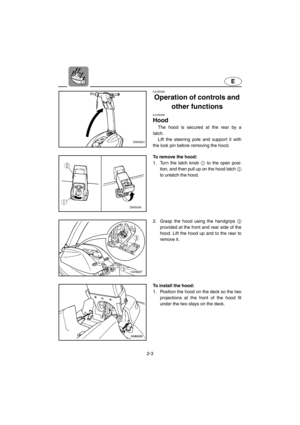 26
26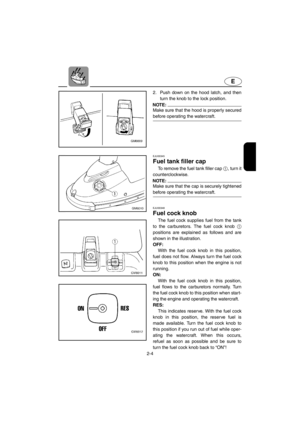 27
27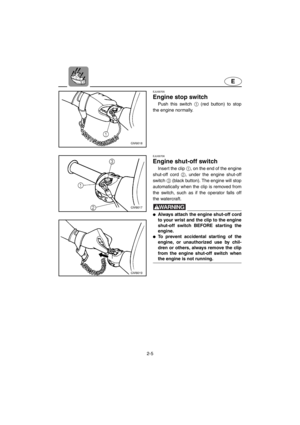 28
28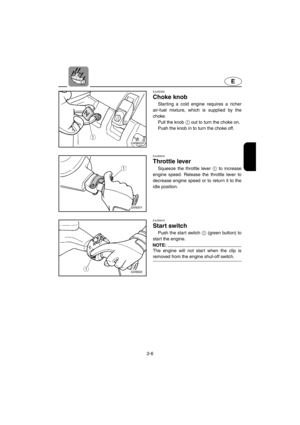 29
29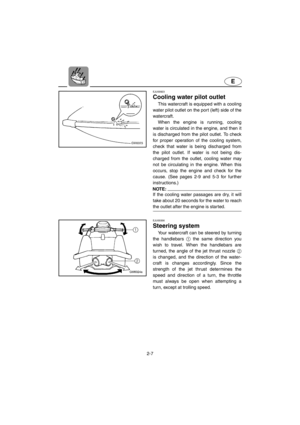 30
30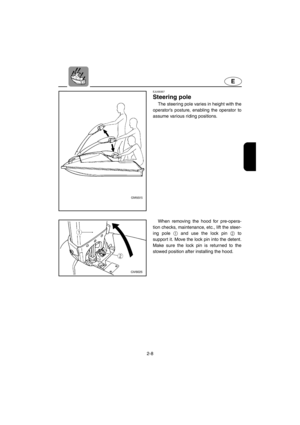 31
31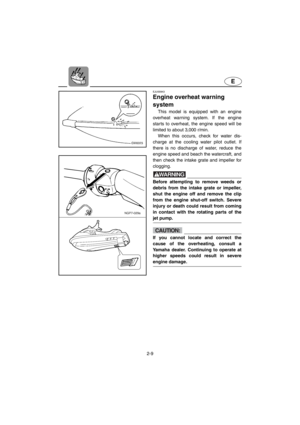 32
32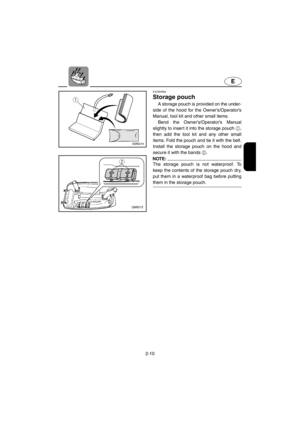 33
33 34
34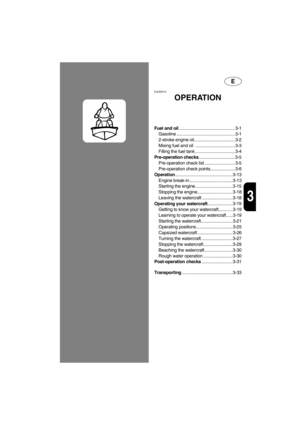 35
35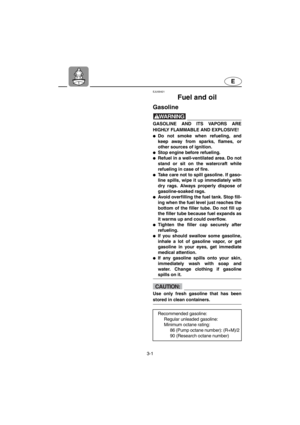 36
36 37
37 38
38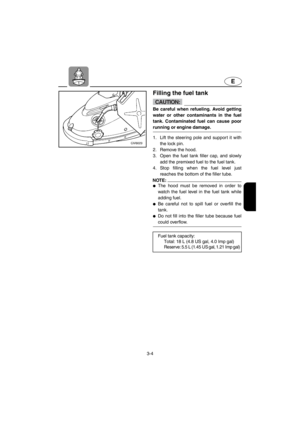 39
39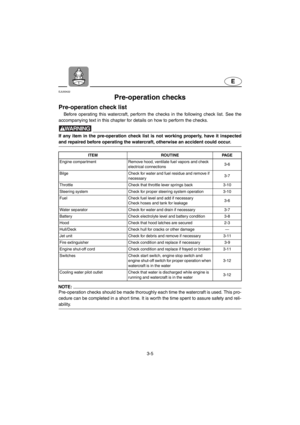 40
40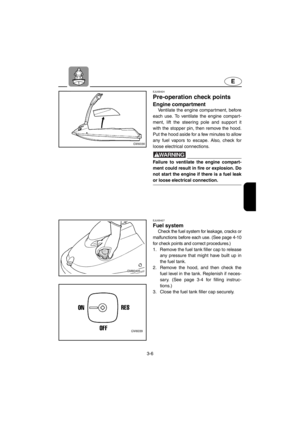 41
41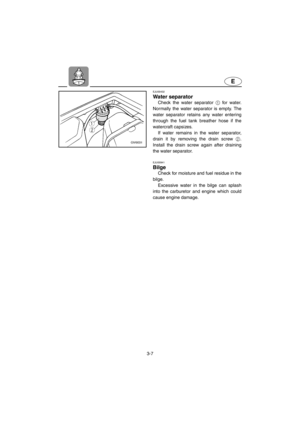 42
42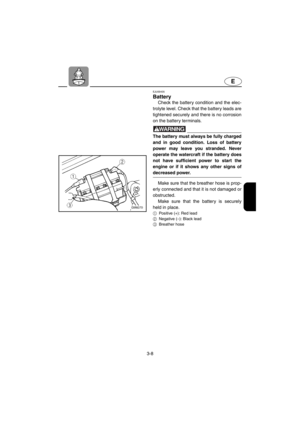 43
43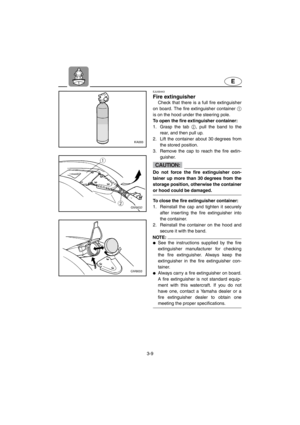 44
44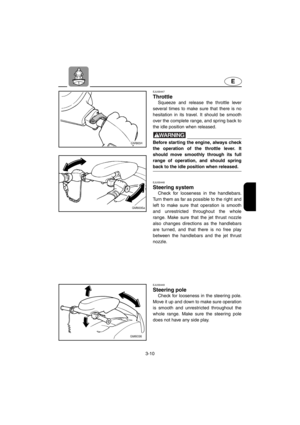 45
45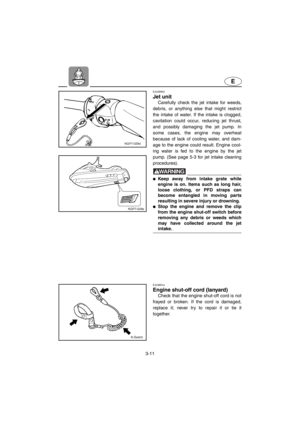 46
46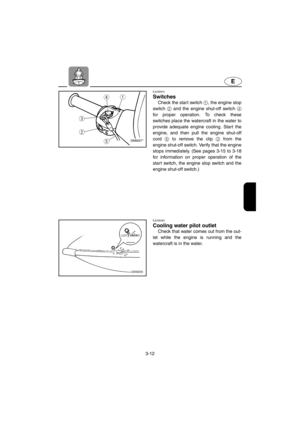 47
47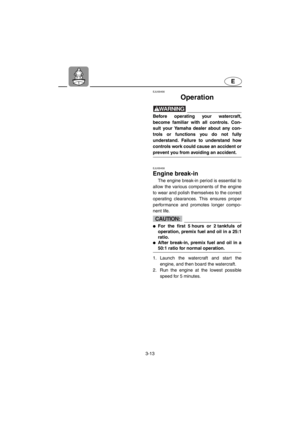 48
48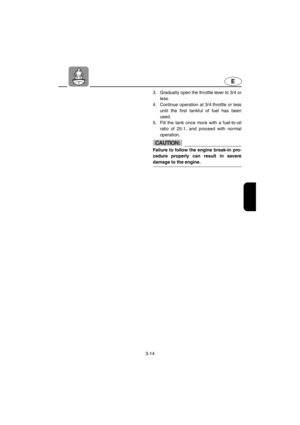 49
49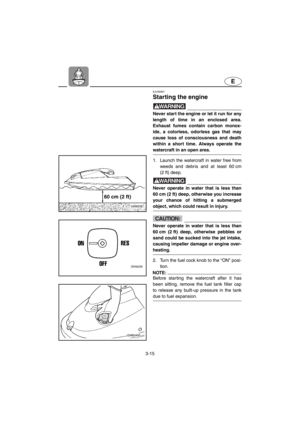 50
50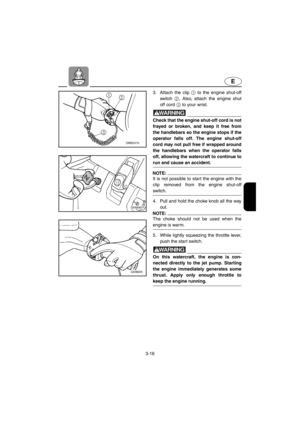 51
51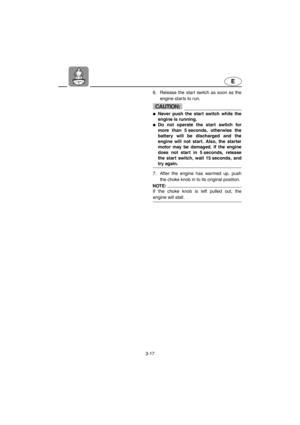 52
52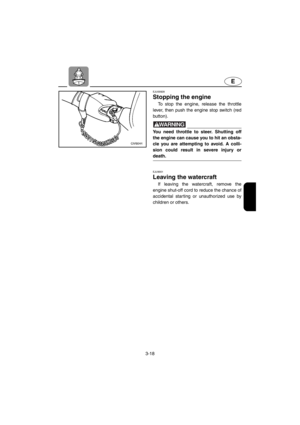 53
53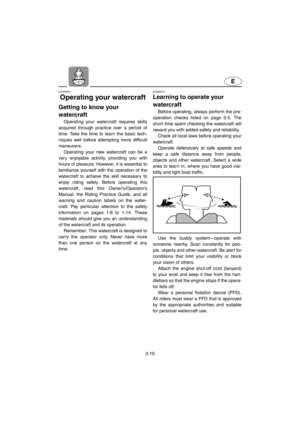 54
54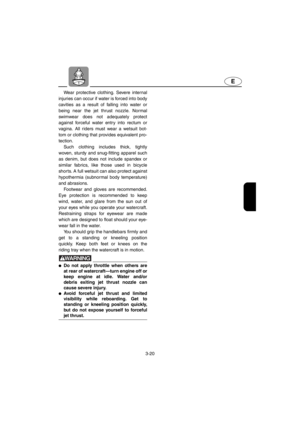 55
55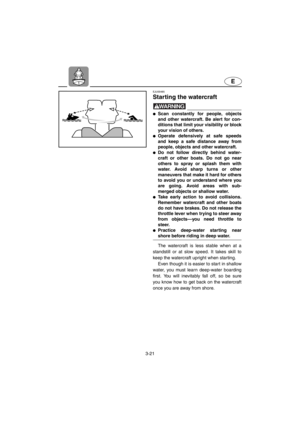 56
56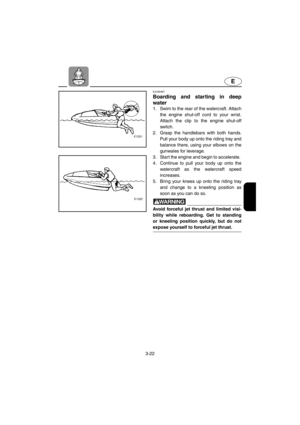 57
57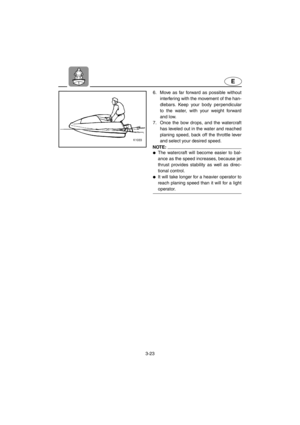 58
58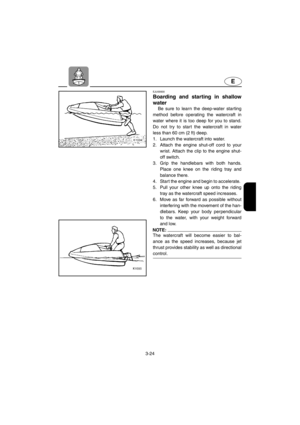 59
59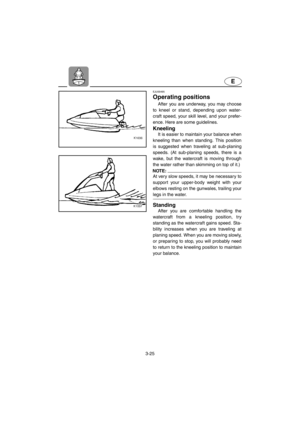 60
60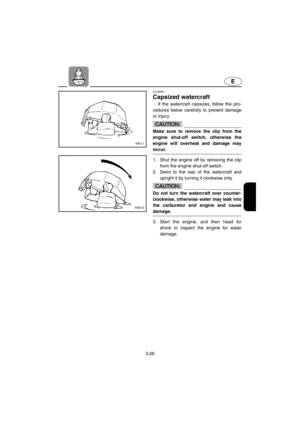 61
61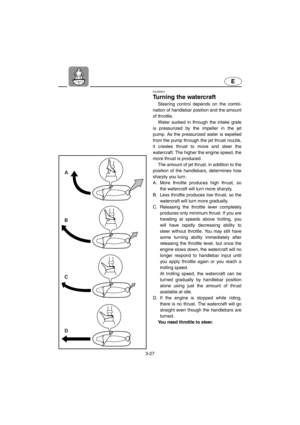 62
62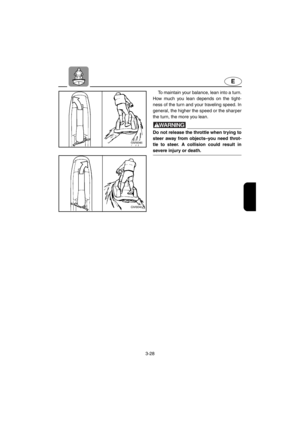 63
63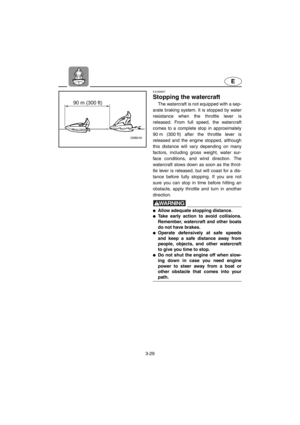 64
64 65
65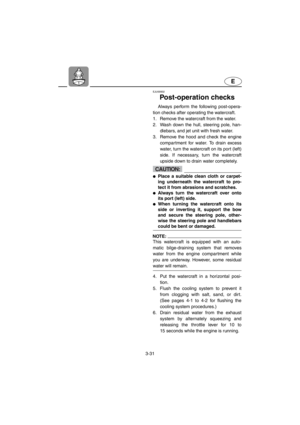 66
66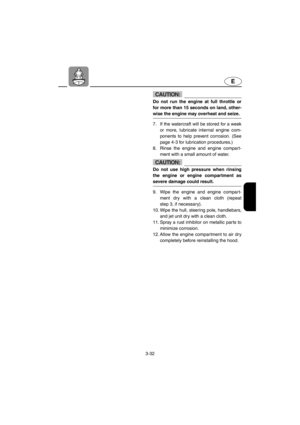 67
67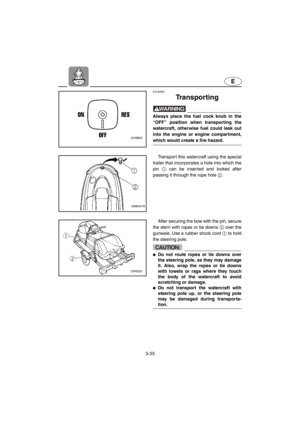 68
68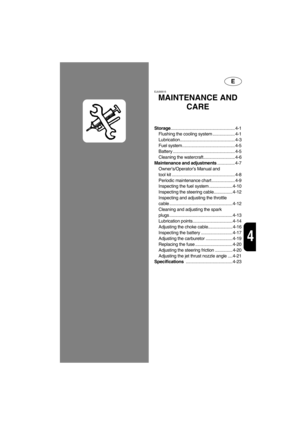 69
69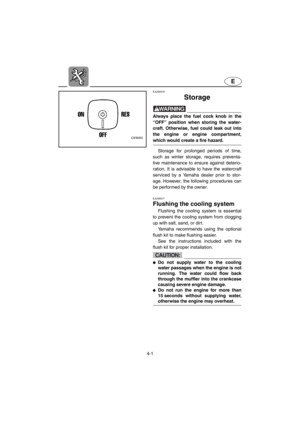 70
70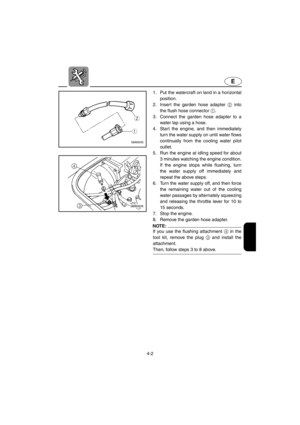 71
71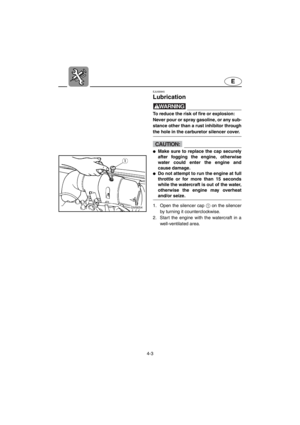 72
72 73
73 74
74 75
75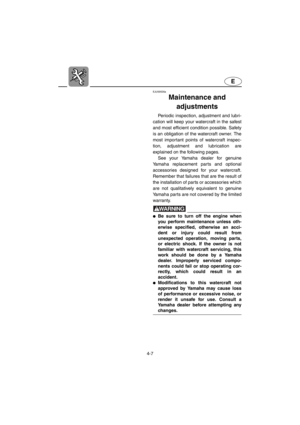 76
76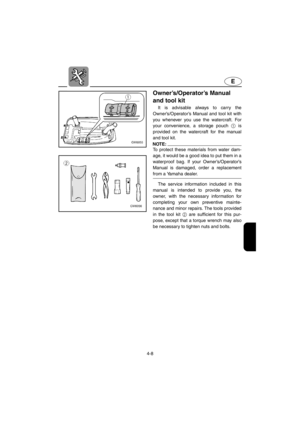 77
77 78
78 79
79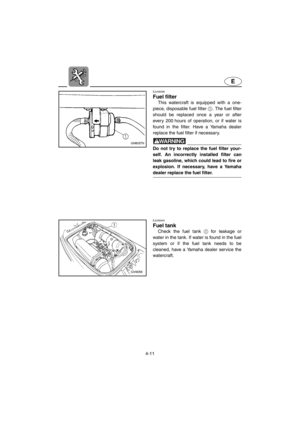 80
80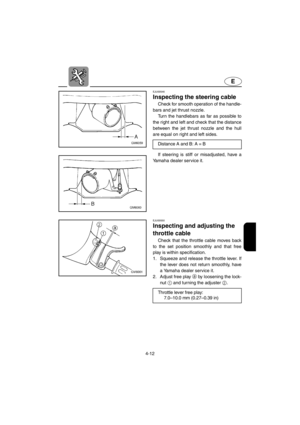 81
81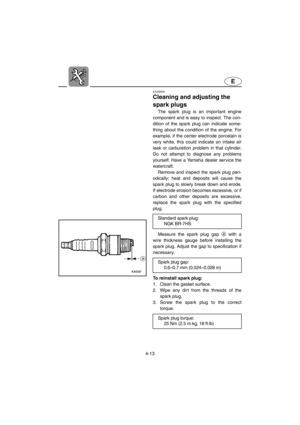 82
82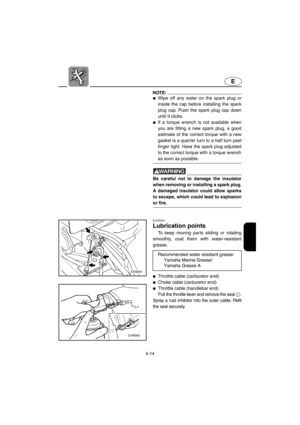 83
83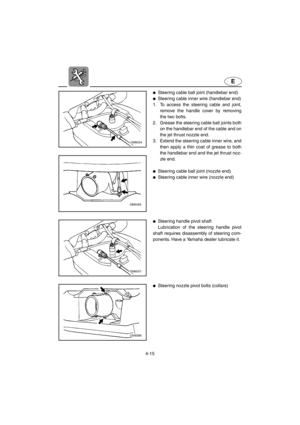 84
84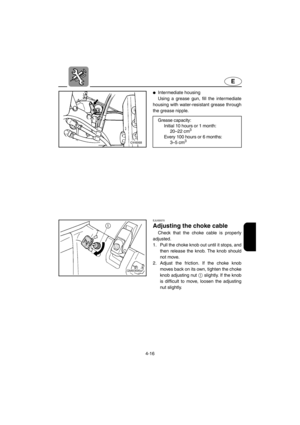 85
85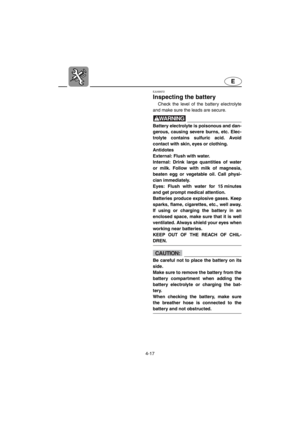 86
86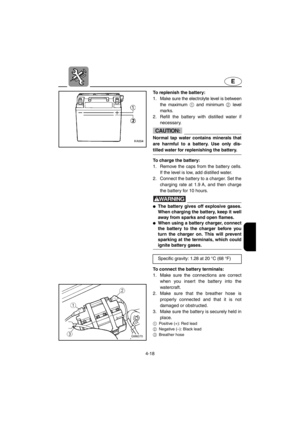 87
87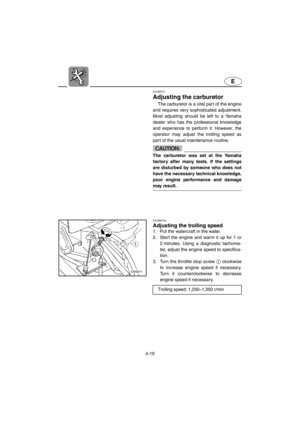 88
88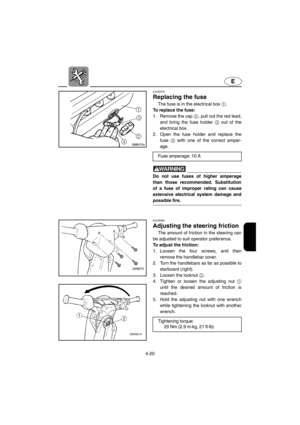 89
89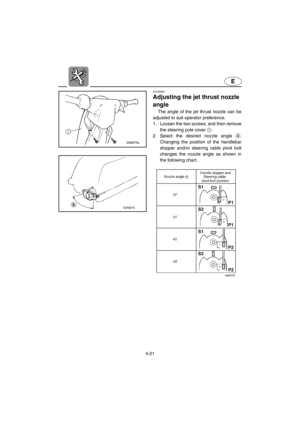 90
90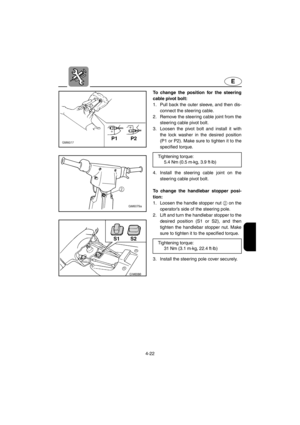 91
91 92
92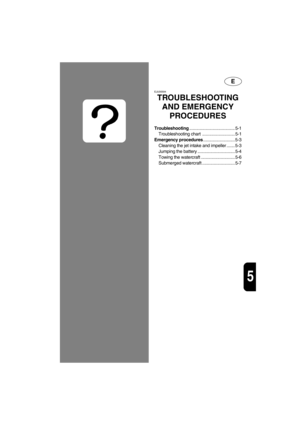 93
93 94
94 95
95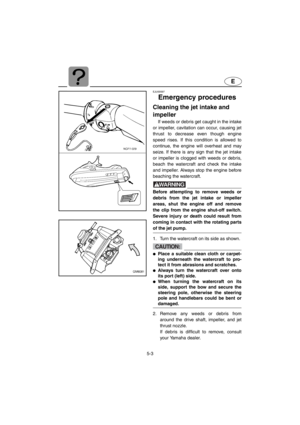 96
96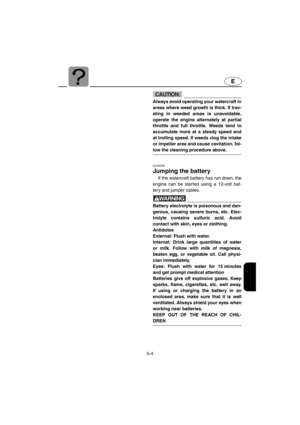 97
97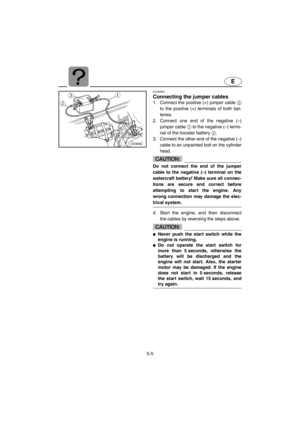 98
98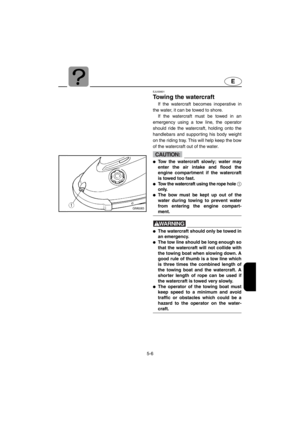 99
99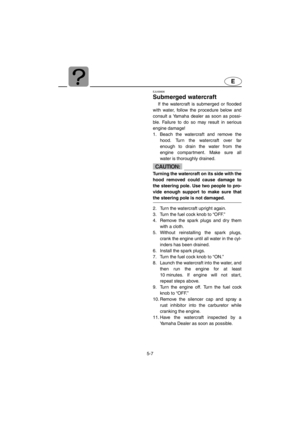 100
100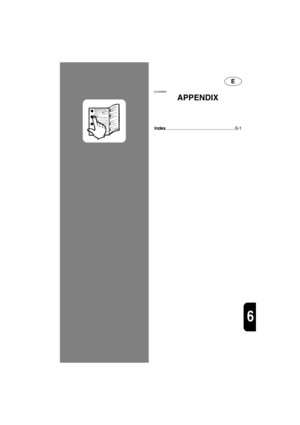 101
101 102
102 103
103 104
104 105
105 106
106






